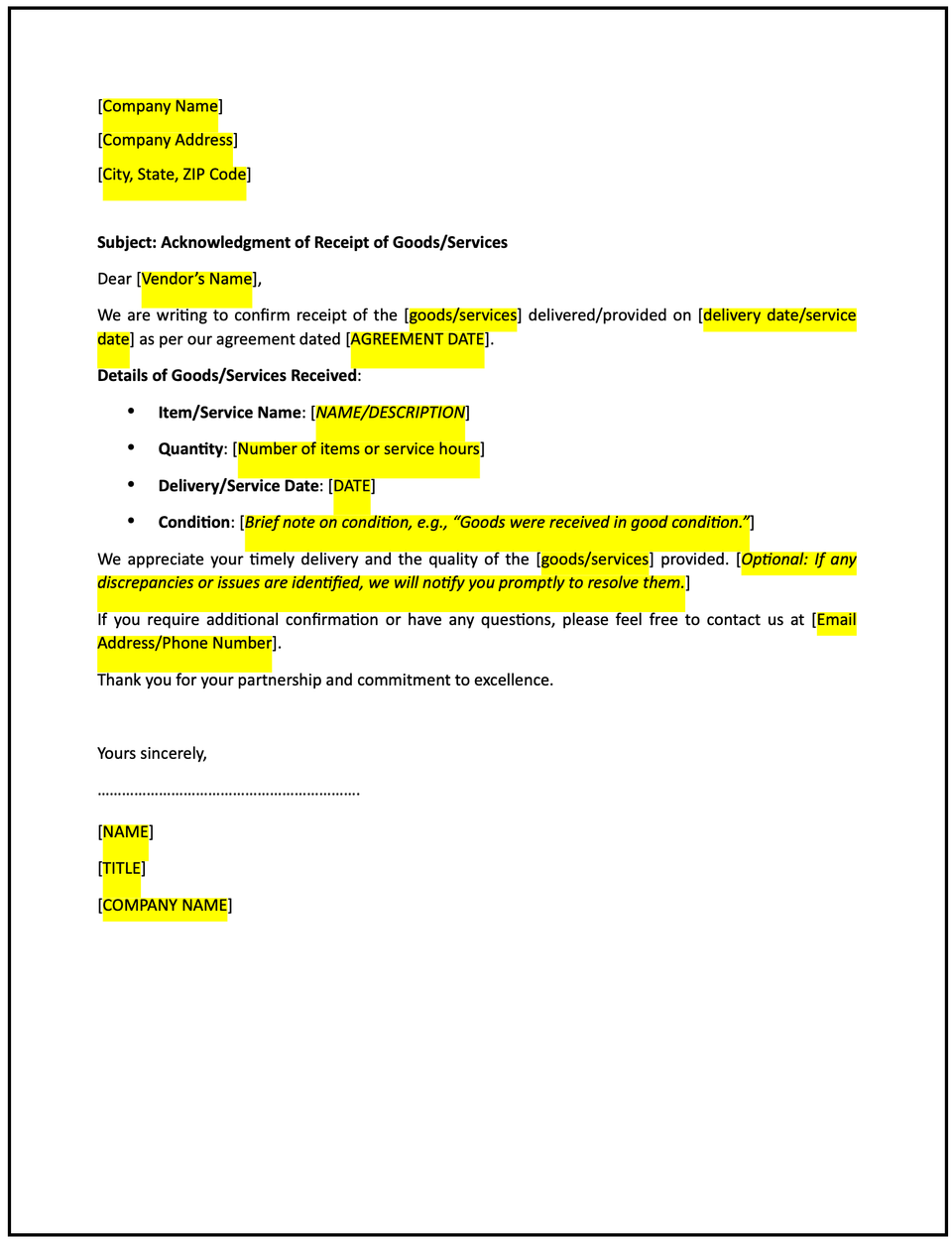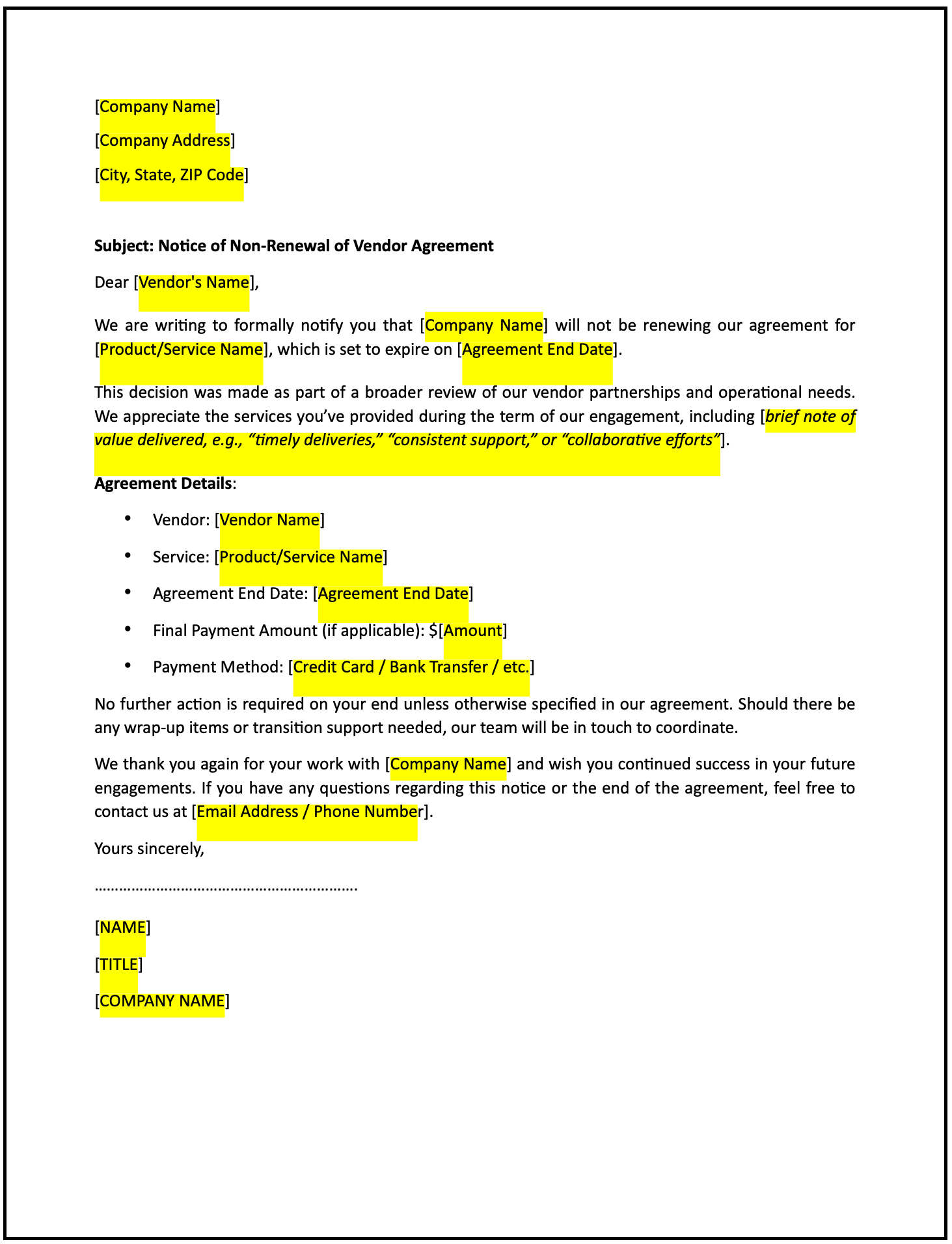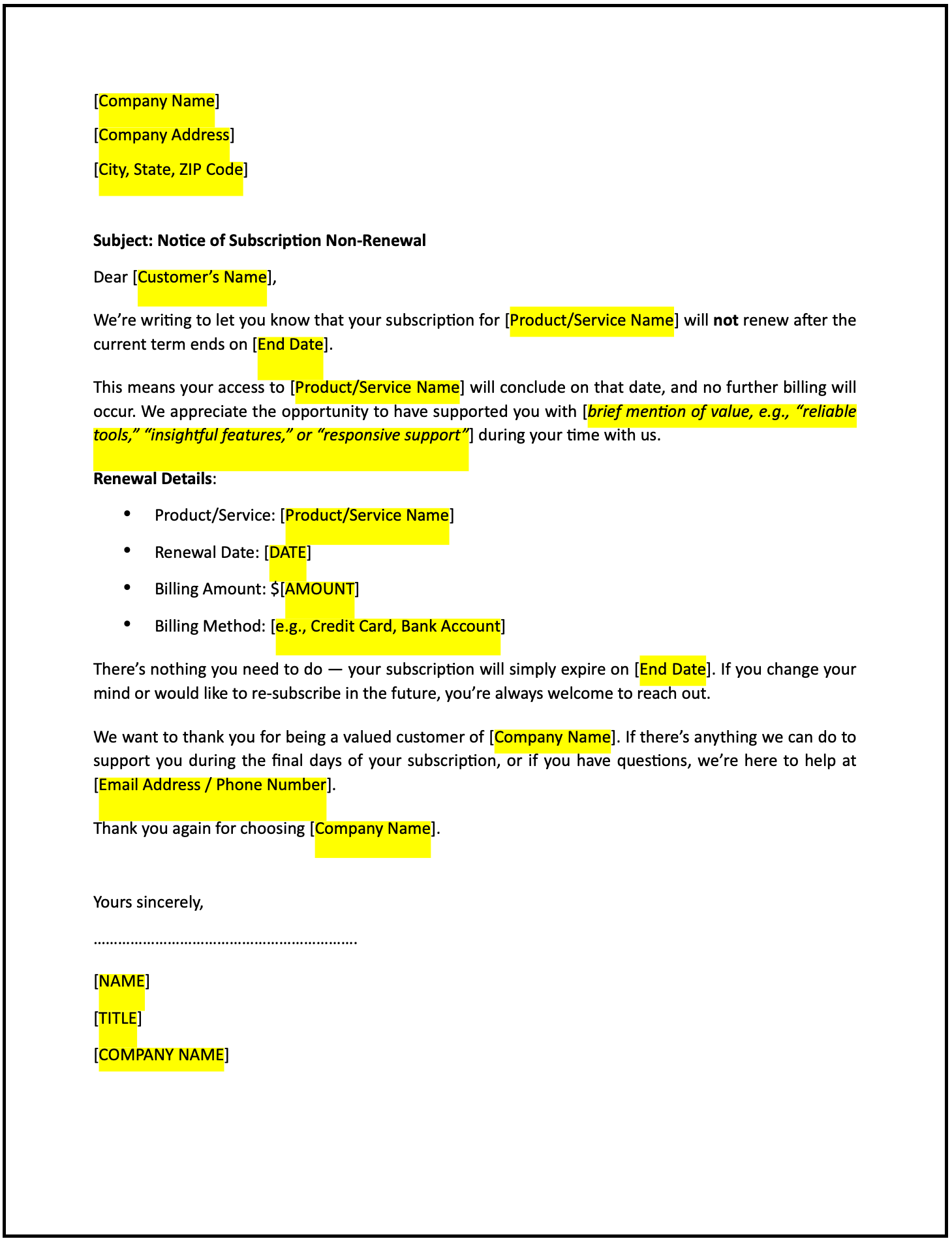Acknowledgment letter of receipt of goods or services : Free template

Acknowledgment letter of receipt of goods or services
An acknowledgment letter of receipt of goods or services is a formal communication used to confirm that the ordered items or services have been delivered and received as per the agreement. This letter ensures transparency, supports record-keeping, and fosters trust in vendor-client relationships.
How to use this acknowledgment letter of receipt of goods or services
- Open with an introduction: Address the vendor or service provider respectfully and reference the order or service agreement by number or name.
- Confirm receipt: Clearly state that the goods or services have been received, mentioning the date of receipt.
- Specify details: Briefly describe the items or services received, including quantities, quality, or other relevant attributes.
- Highlight compliance: Indicate whether the delivery meets the agreed terms, such as specifications, timelines, or conditions.
- Provide feedback: If applicable, mention any observations, discrepancies, or issues noticed during inspection.
- Express appreciation: Thank the vendor or service provider for fulfilling the order or agreement.
- Maintain a professional tone: Ensure the letter is clear, respectful, and focused on fostering a positive working relationship.
- Provide contact information: Include details for the recipient to reach out for further clarification or discussion.
Benefits of using an acknowledgment letter of receipt of goods or services
This letter ensures a structured and professional way to confirm receipt while fostering accountability and trust. Here’s how it helps:
- Promotes transparency: Confirming receipt ensures all parties are aligned regarding the transaction.
- Reflects professionalism: A well-crafted letter demonstrates respect and attention to detail.
- Supports record-keeping: Documenting receipt provides a clear reference for future audits or disputes.
- Encourages accountability: Highlighting compliance reinforces the importance of meeting agreed terms.
- Builds trust: Acknowledging successful delivery strengthens vendor-client relationships.
Tips for writing an effective acknowledgment letter of receipt of goods or services
- Be specific: Clearly describe the goods or services received, referencing order or agreement details.
- Use professional language: Maintain a respectful and concise tone to foster trust.
- Provide context: Briefly explain how the delivery aligns with the agreement and its importance to your operations.
- Highlight mutual benefits: Emphasize how successful delivery supports both parties' goals.
- Include actionable steps: Share instructions for addressing any discrepancies or initiating further discussions if needed.
- Keep it concise: Focus on the essential points while ensuring the tone is professional and engaging.
Frequently asked questions (FAQs)
Q: What details should I include in this letter?
A: Include references to the order or agreement, the date of receipt, and a description of the items or services.
Q: Should I personalize the letter?
A: Yes, addressing the vendor or service provider by name and referencing specific order details demonstrates attentiveness and professionalism.
Q: Who typically sends this letter?
A: Procurement teams, supply chain managers, or business owners typically send this letter.
Q: How formal should this letter be?
A: The tone should be professional, respectful, and focused on confirming receipt and ensuring alignment.
Q: When should this letter be sent?
A: Send the letter promptly after inspecting and confirming the receipt of goods or services.
Q: Can this letter address issues or discrepancies?
A: Yes, briefly mentioning discrepancies ensures the vendor or service provider can take corrective action.
Q: Is acknowledgment from the recipient required?
A: While not mandatory, requesting acknowledgment ensures alignment and understanding of any feedback provided.
This article contains general legal information and does not contain legal advice. Cobrief is not a law firm or a substitute for an attorney or law firm. The law is complex and changes often. For legal advice, please ask a lawyer.


